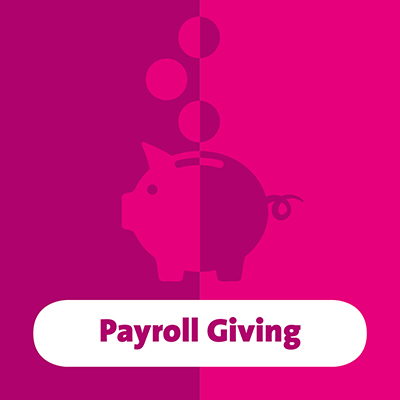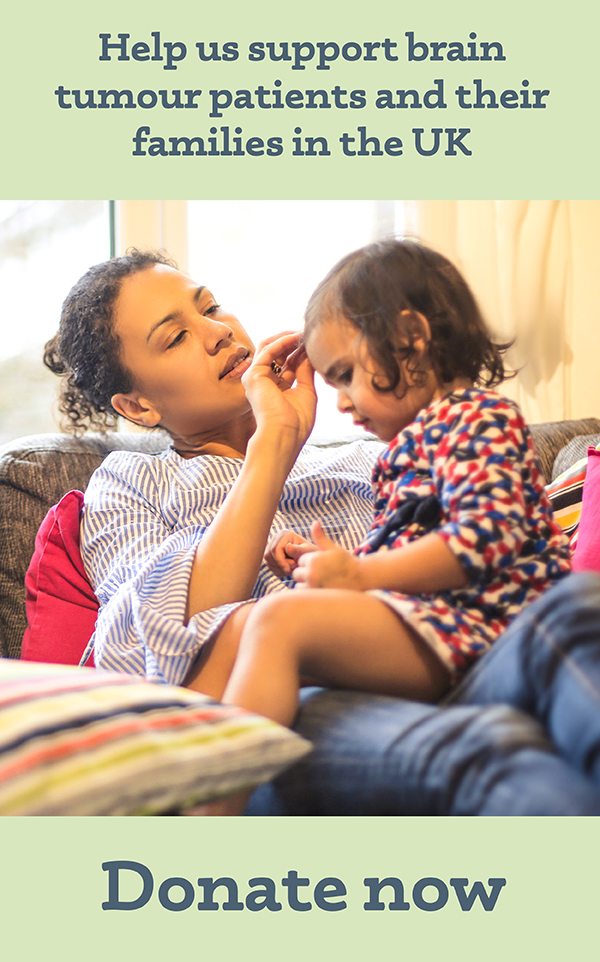Fundraise at work
Without the support we receive from businesses and organisations just like yours, we simply wouldn’t be here to support those who need us most. That’s why, as a smaller charity, your support makes a big difference.
Press the buttons below to find out more about how you can fundraise at work.
Charity of choice
By adopting brainstrust as your charity of choice, you will proudly join a community that’s passionate about helping everyone affected by a brain tumour diagnosis; whoever they are, and wherever they are on their journey.
If you would like to nominate brainstrust as your charity of choice, we would be incredibly grateful. For further information or support, please don’t hesitate to get in touch with our fundraising team.
| Get involved: |
|---|
| Offer gifts in kind |
| Pick a challenge that inspires you |
| Do your own thing |
| Become a sponsor |
| Take part in one of our national campaigns |
| Volunteer |
| Payroll Giving |
| Benefits: |
|---|
| Enjoy fun team building activities and boost morale |
| Achieve your CSR (Corporate Social Responsibility) objectives |
| Collaborate on social media projects |
| Increased publicity nationwide |
| Appear as a branded corporate supporter on our website |
| Receive personalised support from our dedicated fundraising team |
| Make a positive difference to thousands of people across the UK who hear the words “you have a brain tumour”, ensuring patients and carers can access 24/7 support from brainstrust |
Events and Campaigns
We’re extremely honoured to receive support from thousands of people all over the UK who go the extra-mile to show they care. Whether you rally the troops or go it alone, do something big or make a token gesture, there’s something to suit everyone’s taste and ability… and it all makes an incredible difference.
When you sign up to any of our events or campaigns, you will receive a bespoke fundraising pack specifically designed to lend a helping hand every step of the way. Our fundraising team Julia, Sophie and Steph, are always a phone call or email way.
Get involved:
Events & Campaigns
Our vital work would not be possible without you. Click here to find out how you can help us through fundraising.
Sponsorship
With an array of events, campaigns and other sponsorship opportunities available, our fundraising team can mould and adapt each partnership to suit your company’s charitable goals and preferences. It’s a great way to collaborate with us whilst demonstrating your commitment to making a difference within the brain tumour community.
Sponsorship opportunities:
Events, Campaigns and Trading
Support materials & activities
- Brain box
- Meetups
- Support resources
Benefits (to be specifically tailored to each sponsorship opportunity):
- Branding included on event literature, press releases and social media promotions
- Logo printed on event specific merchandise
- A5 advert included within supporter welcome pack
- Agreed number of free spaces in the event
- A discounted ticket price for staff, family and friends
- On-site exposure at events with branded corporate station
- Make a positive difference to thousands of people across the UK who hear the words “you have a brain tumour”, ensuring patients and carers can access 24/7 support from brainstrust
Gifts in Kind
More than 60,000 people in the UK are living with a devastating brain tumour diagnosis. 40% of all cancers spread to the brain. It is the most the most common form of cancer in people under 40. But these facts don’t help you when you hear the words “you have a brain tumour”.
A brain tumour diagnosis brings with it the double impact of a cancer diagnosis and a progressively debilitating neurological disease. The treatment is complex and harmful; and diagnosis brings with it fear, isolation, disempowerment and a loss of control. This is where we help, and we need your support.
One of our passion projects is our brain box, sent to patients, carers and family members. Each brain box is tailored to the recipient, made up of specific resources providing essential information to help people feel less alone and less afraid in the face of a brain tumour diagnosis. With wellbeing at the heart of what we do, we also add in a few treats – a little something to brighten up their day!
With each brain box costing £40, we are extremely grateful to receive gifts in kind. Something as simple as a warm cup and tea with biscuits, or a small toy to include in a children’s brain box, truly makes the world of difference.
Ideas
If you are stuck for ideas, we’ve got you covered! Find our events here (link to event calendar page) or see how other people have done their own thing to support people with a brain tumour.

















